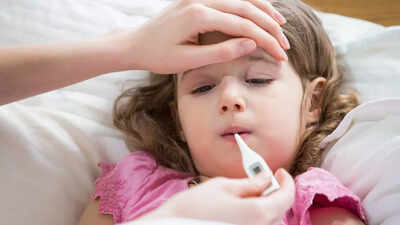ARTICLE AD BOX

A feverish night, a cranky toddler, and a worried parent reaching for the paracetamol bottle. It is one of the most commonly trusted medicines in every household, especially for children.
Quick, effective, and usually safe, paracetamol is often the first thing parents think of when their child has a fever or aches. But here is the real concern: how safe is it really when given to kids, and what are the rules that must be followed?A study published in the European Journal of Pediatrics highlights that although paracetamol is widely used and effective, the long-term effects on child development remain less studied. While short-term use is generally safe and reliable, overdosing or incorrect administration can lead to serious risks, particularly liver damage.
This makes it essential for parents to know the right dosage, timing, and formulation before giving it.Understanding how paracetamol works, when to give it, and what to avoid can give parents peace of mind and ensure their child’s recovery is both quick and safe.
What every parent needs to know about Paracetamol safety
Accurate dosing by weight and age
Paracetamol dosage for children should be based on their weight, usually 10–15 mg per kilogram every 4–6 hours, with a maximum of five doses in 24 hours. Exceeding this limit can put stress on the liver.
Always use the measuring device that comes with the syrup or liquid formulation instead of a kitchen spoon, which can lead to underdosing or overdosing.
Understand formulations and their effects
Paracetamol is available as syrups, chewable tablets, regular tablets, and rectal suppositories. Liquids act quickly but can vary in strength depending on the brand. Suppositories may take longer to work, but they can help when a child cannot swallow medicine or is vomiting.
Choosing the right form depends on your child’s age, comfort, and the urgency of relief needed.
Watch for overdose risks and toxicity
Accidental overdoses of paracetamol remain one of the leading causes of acute liver damage in children. This can happen when parents unknowingly give multiple medicines that contain paracetamol, such as cough syrups or cold remedies. Underweight or malnourished children are at higher risk of toxicity even with standard doses.
Keeping track of timing and total daily intake is key to preventing harm.
Parental misunderstanding is common
Studies show that most parents struggle with the correct dosage of paracetamol for children. Many underestimate the risks of overdose and believe that a little extra dose will speed recovery. This highlights the need for clearer medical guidance and for parents to always double-check labels before giving medicine.
Hospital-based safety improvements work
Hospitals have reduced errors in paracetamol dosing by using clear charts, electronic checks, and regular staff training.
In particular, these measures have helped reduce mistakes in giving intravenous paracetamol to babies under 10 kilograms. This shows that with better awareness and systems, the risks of incorrect use can be significantly lowered at home, too.Paracetamol remains one of the most effective medicines for children, but only when used with care. Always follow the weight-based dosage, avoid mixing it with other medicines that contain paracetamol, and stick to the recommended frequency.
Occasional use is safe, but repeated or careless dosing can cause harm. Parents who stay mindful and informed can use paracetamol to ease their child’s symptoms without fear. When in doubt, always consult a pediatrician before giving another dose.Disclaimer: This article is for general informational purposes only and is not a substitute for professional medical advice, diagnosis, or treatment. Always seek the guidance of a qualified healthcare provider regarding any medical condition or lifestyle change.Also read|30 days without sugary drinks: See how your body, skin and health completely change



.png)
.png)
.png)
















 2 days ago
6
2 days ago
6







 English (US) ·
English (US) ·